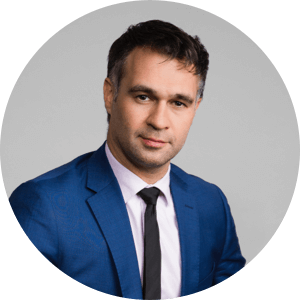The range of cancers for which radiotherapy is being used is ever expanding. There is an unavoidable dose exposure that occurs in surrounding normal cells. This radiation exposure does not have the effect of simply killing normal cells but elicits a permanent damage or injury profile that persists and continues to evolve throughout the life of the patient. This is known as Radiation Injury Bystander Effect (RIBE). These changes result in ongoing tissue contracture, immense pain, soft tissue swelling, and tissue breakdown; in turn leading to significant disability, recurrent infection, impairment of quality of life, and potentially life-threatening exposure of vital structures such as the heart.
Lymphoedema is a debilitating soft tissue disease caused by an impairment of the lymphatic system, which leads to fluid build-up in the surrounding interstitial tissue. The lymphatic system is a network of thin-walled vessels – comprised of lymphatic endothelial cells-that is integral to fluid homeostasis, immune cell surveillance and absorption of dietary fat. Lymphoedema can be an inherited disorder, such as Milroy’s disease, but in some individuals it is acquired following a trauma such as surgery, infection or radiation therapy. Approximately 20% of breast cancer patients undergoing radiotherapy and/or surgical resection of lymph nodes will develop lymphoedema. Currently, there are no therapeutic treatments available.
To understand the genetic basis and signalling pathways activated in individuals with trauma induced lymphoedema, we have developed in vitro and in vivo models of lymphoedema that mimic clinical radiation dosage regimes and surgical treatments, specifically focussing on the cell types that occur in the affected lymphoedematous tissue: adipocytes, endothelial cells, immune cells and adipose-derived mesenchymal stem cells that comprise the skin architecture. We performed a raft of functional bioassays to specifically interrogate the key functions of each cell type during the course of radiation-induced lymphoedema and have developed genomic, proteomic and metabolic platforms to understand the key signalling and communication pathways between lymphatic endothelial cells and other key cells within their microenvironment. This knowledge will enable development of therapeutic agents that may treat aspects of this disease such as tissue swelling, tissue fibrosis and pain, as well as agents that promote tissue regeneration.
Proudly supported by the O’Brien Foundation
Current research projects
-
Understanding how lymphatic endothelial cells communicate with their microenvironment following soft tissue radiation injury with a focus on lymphoedema
While radiation therapy is common in treatment of cancer patients, the consequences of RIBE in target tissues can cause severe side effects such as lymphoedema. We wish to understand this phenomenon at the cellular and genetic level by interrogating the effects that sub-lethal doses of radiation has on cells that comprise local tissue such as lymphatic and blood endothelial cells, fibroblasts, adipocytes, immune cells and adipose derived mesochymal stem cells. We have performed microarray analysis to obtain gene signatures of these cell types that are unique to the process of radiation injury and have established in vitro and in vivo lymphoedema and other injury models to interrogate the leading signalling pathways activated during this process. Our data has allowed us to explore novel mechanisms by which cells communicate during RIBE that will enable the design of novel therapeutics to target side effects of radiation injury such as tissue contracture, pain, lymphoedema and cardiac disease.
Understanding the genetics in patients with radiation-injury induced lymphoedemaIt is estimated that approximately ~20% of women with breast cancer undergoing radiation and/or surgical resection of affected lymph nodes will develop lymphoedema. We would like to understand the genetic basis of these individuals and are in the process of a long-term genetic screen of patients that have begun to develop early signs of lymphoedema with the view of identifying any genes that are mutated. This knowledge will assist in developing alternative treatment regimes and management of women with breast cancer, thereby preventing the onset of lymphoedema in those individuals genetically predisposed to developing secondary lymphoedema.
Exploring the use adipose-derived stem cells (ADSCs) as a therapeutic agent in radiation induced injuryIt has been previously shown in plastic surgery that fat grafting has the ability to promote lymphangiogenesis in vitro and in vivo and ameliorate some of the chronic tissue effects of radiation injury. These effects are largely attributed to the presence of adipose-derived stem cells (ADSC) (Shukla et al., 2015). We wish to understand the mechanism by which ADSC confer their regenerative properties during radiation induced injury in local tissue. We have developed genetic, proteomics, metabolomics and cell function screens to understand what the key molecular components are critical for the process of ADSC rescue during radiation injury.
Understanding the genetics of lipoedema, an alternative form of soft tissue swelling of the lower limbsLipoedema is an alternative form of soft tissue swelling of the lower limbs, most common in females after the onset of puberty. Patients with lipoedema develop bilateral limb swelling secondary to adipose tissue deposits, with the feet generally spared (Rockson et al., 2000). Patients develop an immense amount of pain, bruising, immobility and can suffer from depression. There is some evidence to suggest that there is a lymphatic dysfunction component to this disease, however the link has not been clearly defined. There is very little, if any, literature pertaining to the genetics or mechanism of lipoedema and there are no current therapies. We are in the process of recruiting a large patient cohort to perform a genetic and tissue analysis of patients affected with lipoedema. We would like to understand the molecular basis of this disease with the view of developing therapeutic agents.
People



- Dr Nadeeka Bandara, Research Officer (Mackenzie Hummingbirds Fellowship)
- Dr Eric Yuan, Research Officer (Mackenzie Hummingbirds Fellowship)
- Isabella Reid, PhD student
- Hafsa Syeda, PhD student
Student projects
Understanding the epigenetic regulation SphK2 in fat development and metabolic disease
Lab: Lymphatic, Adipose & Regenerative Medicine
Supervisor(s): Dr Tara Karnezis
Diseases focus: Healthy AgeingSelected publications
Gambino TJ, Williams SP, Caesar C, Resnick D, Nowell CJ, Farnsworth RH, Achen MG, Stacker SA, Karnezis T (2017). A three-dimensional lymphatic endothelial cell tube formation assay to identify novel kinases involved in lymphatic vessel remodelling. Assay Drug Development Technology 15: 30.
Williams SP, Gould CM, Nowell CJ, Karnezis T, Achen MG, Simpson KJ, Stacker SA (2017). Systematic high-content genome wide RNAi screen of endothelial cell migration and morphology. Scientific Data doi: 10.1038/sdata/2017.9.
Williams SP, Odell AF, Karnezis T, Farnsworth RH, Gould CM, Li J, Paquet-Fifield S, Harris NC, Walter A, Gregory JL, Lamont SF, Liu R, Takano EA, Nowell CJ, Bower NI, Resnick D, Smyth GK, Coultas L, Hogan BM, Fox SB, Mueller SN, Simpson KJ, Achen MG, Stacker SA (2017). Genome-wide functional analysis reveals signalling regulators of lymphatic endothelial cell migration and remodelling. Science Signalling doi: 10.1126/scisignal.aal2987.
Nile S, Wnag X, Sivakumaran P, Chong MMW, Liw X, Karnezis T, Bandara N, Takov K, Nowell CJ, Wilcox S, Shambrook M, Hill AF, Harris NC, Newcomb AE, Strappe P, Shayan R, Hernandez D, Clarke J, Hanssen E, Davidson SM, Dusting GJ, Pebay A, Ho JWK, Williamson N, Lim SY (2018). Biologically active constituents of the secretome of human W8B2+ cardiac stem cells. Scientific Reports 8(1): 1579.
Karnezis T, Farnsworth RF, Harris NC, Williams SP, Caesar C, Byrne DJ, Herle P, Macheda ML, Shayan R, Zhang YF, Yazar S, Takouridis SJ, Gerard C, Fox S, Achen MG, Stacker SA (2019). CCL27/CCL28-CCR10 chemokine signaling mediates migration of lymphatic endothelial cells. Cancer Research doi: 10. 1158/0008-5472.